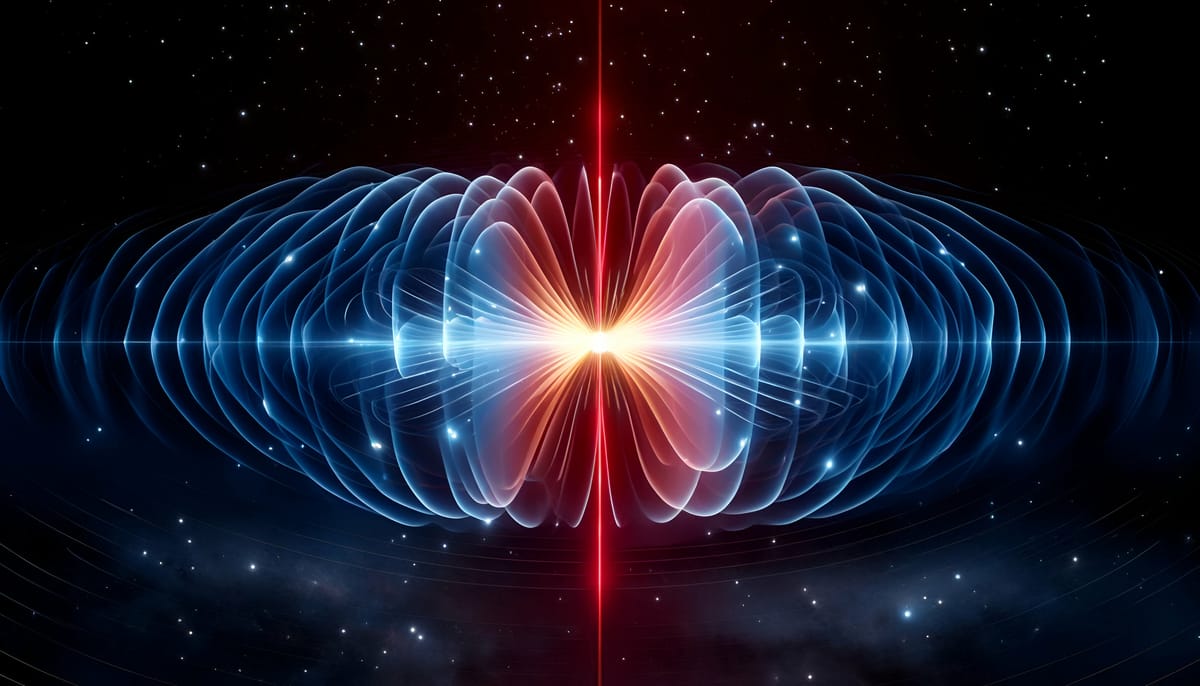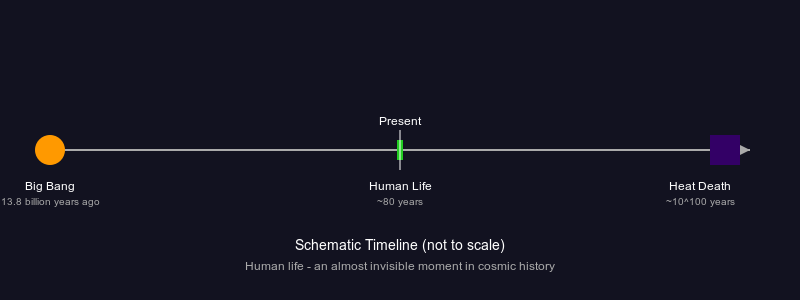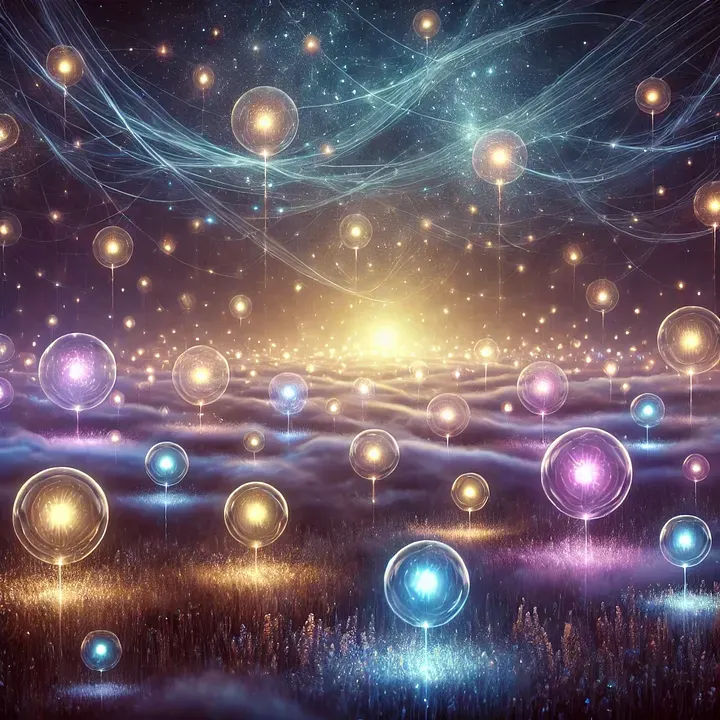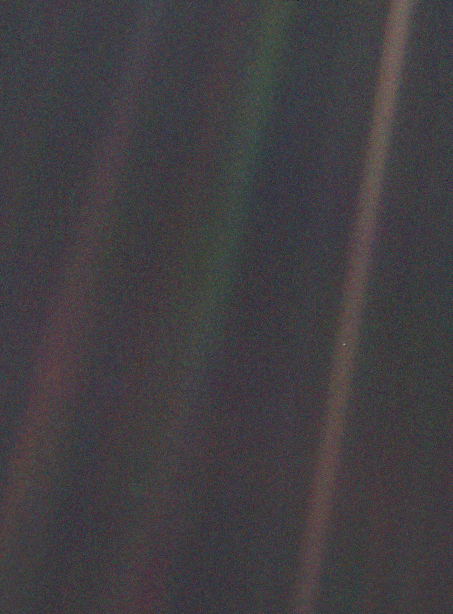Fluctuation of Consciousness: Is There a Limit to Everything?
Consciousness as a fluctuation: why are you here and now? A philosophical journey into the field of consciousnesses and its limits.

🎧 Listen to the key ideas in podcast format
Probably everyone at some point in their life asks questions like “Who am I” and “Why was I born in this world.”
Let’s complicate this already fundamental existential task and introduce some statistics into these questions.
- Why was I born exactly where I was born?
- Why was I born into my family, and not into another?
- Why was I born in this historical period, and not in countless others throughout world history?
And, if we formulate it all together:
Why among countless possible perspectives of existence do we experience the world from a specific point of view? What determines the connection between a specific consciousness and a specific physical body? What law, essence, or mechanism distributes consciousnesses among bodies?
Let’s imagine a typical situation where we buy train tickets and end up in a compartment with three other people. On this day, traveling with us are a professor from the local university, a woman who works as a doctor, and a teenager traveling on vacation. Since we chose our ticket randomly, ending up in a compartment with these specific people is complete chance. But what was the probability that out of dozens of compartments on the train and hundreds of people, we would end up with these particular individuals (it’s worth noting that some encounters on trains can indeed become fateful)?
Looking at it more broadly, we can identify a special configuration that would determine how these people (and we) bought tickets, taking into account their schedules, life and work circumstances, habits, the load on the ticket sales system, and availability. This configuration, considering all conditions, would explain to us how it happened that we ended up in a compartment with these specific people.
Does a similar configuration exist for the process of distributing consciousness?
After all, if I was born in one of the smaller countries, statistically it would have been much more likely to be born in countries with billions of people, or on another, much more populated continent — the number of families and birth rates there are much higher. What determined that I was born to my parents specifically, and not in a social class that makes up the majority of families in my environment?
Throughout history, 100 billion Homo Sapiens have lived on planet Earth, but I happened to be among the 7–8% who live in the 21st century and witness historical events taking place specifically in this period. Events before my life and events after my life are inaccessible to me.
Let’s examine this last statement in more detail.
Fluctuations
Human life is defined by a duration of approximately 60–100 years, depending on countries, level of medicine, and welfare. This is roughly how long we are conscious of ourselves in this world and function within it. It’s difficult for us to judge the subjective experience of our consciousness after the biological death of the body without delving into the esoteric (science reasonably concludes that consciousness doesn’t exist after death). However, we have the opportunity to contemplate the “experience” of our consciousness before our birth — and expectedly see nothing there, because we didn’t yet exist.
If we logically assume that the state of our consciousness before our existence and the state of consciousness after our existence are identical, we see the following picture:

From the moment of the Big Bang until our birth (that’s 13.6 billion years), our consciousness does not exist.
It begins to exist approximately in the 1–2 year of our life. It continues to exist for 60–100 years of the human organism’s life.
And then, from the moment of our death until the death of the Universe according to any of the physical models of the end of the Universe, we do not exist (and that’s from 22 billion years to trillions or even a googol years).
100 years of one person’s consciousness existing against the backdrop of tens of billions or trillions of years of the Universe’s history.
That’s one heck of a moment!
From the perspective of the Universe itself, the appearance and disappearance of a single consciousness looks like an instantaneous fluctuation — “appeared-disappeared.”
It’s worth clarifying that the Universe is likely not completely indifferent to the phenomenon of consciousness. The Universe contains mechanisms for creating consciousness in the brain of a creature complex enough to have this consciousness. And self-awareness is a fundamental concept on which each complex creature’s perception of the Universe is based. Also, obviously, the concepts of “consciousness” and “absence of consciousness” are clearly separated in the Universe — we have conscious complex beings and a vast amount of unconscious inanimate matter or simple organisms. From the Universe’s perspective, the presence of consciousness might look like a focal point of energy (of different power for different consciousnesses) or the absence of such a point in case there is no consciousness.
Could something as fundamental as the formation of a specific consciousness in the mind of a particular complex being be completely random, a consequence of biological processes, or is there a complex configuration and a whole set of preconditions behind it at other levels of existence?
So consciousness has characteristics of a fluctuation: an instantaneous disturbance of energy on the Universe’s scale. But a disturbance of what exactly?
As you understood, I want to add even more complexity for you, so at this stage we’ll bring in quantum mechanics.
Electrons, photons, and quantum fluctuations in general need a field for disturbances. The disturbance of their fields determines the probable presence or absence of a particle at a point in space.
If we apply a similar principle to our fluctuations of consciousness, we arrive at a field of consciousnesses in which these mentioned fluctuations occur.

Behavior of Consciousnesses in the Field
It’s worth emphasizing that in drawing analogies between physical fields and a hypothetical field of consciousnesses, I’m not claiming that the consciousness field is a quantum field in the physical sense. Rather, I’m pointing to the possibility of fundamental patterns that repeat at different levels of reality. Similar to how atoms, solar systems, and galaxies demonstrate structural similarities, albeit at different scales, wave dynamics principles may manifest in consciousness phenomena, though at an entirely different level. This reflects the deep fractal nature of the Universe, where similar organizational principles manifest at different levels, creating diverse but structurally related phenomena. The field of consciousnesses, thus, may exist as a separate level of reality, functioning according to principles analogous to physical ones.
What could a field of consciousnesses be like?
Quantum mechanics suggests to us that elementary particles simultaneously have wave characteristics.
Electrons or photons interfere and resonate with each other. Do consciousnesses interfere and resonate in our hypothetical field? Is superposition possible for them, when waves of two consciousnesses overlap and amplify each other, or conversely, cancel each other out? What determines the amplitudes and frequencies of these waves, and how do these characteristics affect the representation of consciousnesses in our lives — on people?
It’s clear that the emergence of a new consciousness would raise the system’s chaos, creating a new disturbance, while the disappearance of consciousness would dissipate and balance the system, adding calmness to it.
What happens when two waves with the same frequency overlap in phase? In physics, this is called “resonance” — waves mutually amplify each other. Applying this concept to the consciousness field and its disturbances, we get a synergy of consciousnesses. How might this look in our lives, where consciousness is not a monolithic phenomenon, but separate attributes of consciousness converge in different people? It could appear as similarity of interests, commonality of views, movement in the same direction, mutual support and cooperation, uniting for a common goal, personal progress, and then — on larger scales — scientific, technical, and social progress. An increase in living standards and an increase in the number of people. Simultaneously, an increase in the level of disturbance in the field of consciousnesses.
Now let the waves meet in counterphase — we have dissonance and mutual dampening of wave amplitudes, up to the disappearance of disturbances. What is this if not divergence in views, life principles, and ideologies? Stagnation of development, quarrel, conflict. Groups of consciousnesses that clash in ideological conflicts — the greater the phase difference, the more irreconcilable the essence of ideologies. The larger the groups, the more acute the conflict, which draws societies and their resources into itself, ending in wars and deaths — the fading of disturbances. However, this also reduces the level of general chaos in the system and allows new consciousnesses to form from the remnants of previous ones, similar to how death creates the possibility for the birth of new life through the release of atoms, molecules, and substances.

Are There Limitations?
If we consider the field of consciousnesses as a field analogous to quantum fields, it has the following characteristics:
1. Limitation of the total field energy: similar to how a pool of water can support only a limited number of waves of certain amplitude — the field must have limited finite energy for disturbances.
2. Principle of conservation of energy: In a closed system, energy cannot be created or destroyed, only transformed from one form to another. Therefore, the total “sum” of energy disturbances cannot exceed the total energy of the system.
3. System stability: With an excessive number of disturbances, the system may become unstable. Similar to how an excessive number of waves in a pool leads to a chaotic state with loss of clear wave patterns and destruction, “splashing out” of the pool itself.
4. Interaction of disturbances: Disturbances interact with each other. At too high a density of disturbances, their interaction can become so complex that the system loses any coherence and structure.
5. Information limitations: If consciousness is viewed as an information structure, then there are theoretical limits to the information capacity of the system (Bekenstein’s principle in physics).
Based on that a hypothetical system of the consciousness field in this form contains limitations on the number of disturbances per system. In other words, we get a limitation on the number of consciousnesses per Universe — that is, a limitation on the number of representatives of highly intelligent life. And therefore a direct limitation of scientific and technical progress.
To avoid collapse, such a system would need to be regulated. The last thing I would want is to introduce some referee over the process who would determine which consciousnesses should exist and which should not, thereby stabilizing the “turbulence” in the system just enough so that it doesn’t collapse.
But it’s not necessary. The system can be entirely self-regulated by the superposition of disturbance waves, which I described earlier. Moreover, such self-regulation ensures the cyclicity of disturbance processes over time, with peaks and declines of tension in the system, cleansing from disturbances and creation of new ones, which people may understand as the cyclicity of universal history.
The Field of Consciousnesses and the Fermi Paradox
Here we have a situation similar to how we take planetary resources from animals, not directly affecting the animals, but considerably worsening their lives.
Applying the concept of a field of consciousnesses, which has limitations on the number of consciousnesses in the Universe, we create a situation where two civilizations, being millions of light years apart from each other, and which throughout the history of the Universe are not destined to meet, implicitly influence each other’s development by “biting off” part of the field’s resource. If one civilization is significantly more complex, then it “occupies” a larger portion of possible consciousnesses. And then the second civilization, without receiving any direct negative impact, would “run into” incomprehensible limitations for its development, which would manifest in various ways. The interaction would occur through the consciousness field! On the other hand, the more developed civilization would at some point face the same limitations.
From this, it follows that a monopoly on absolute power, resources, and intellect in the Universe is impossible for any amount of time — civilizations will implicitly hinder each other’s development, even if they don’t contact directly.
For them, this would look like dark magic.
This could only be verified if one of the civilizations completely disappeared — and then the other would receive an incredible boost in development.
But let’s remember what Universe we live in. And where is everyone?
We shout into space from all satellites and radio transmitters, and we still haven’t found even hints of a global cosmic civilization, which a civilization with a development history of even a million years should be (not to mention 13 billion).
Either we’re simply unfortunate, shouting into the wrong parts of the sky, or this looks like another solution to the Fermi paradox — we might have occupied the entire resource of the consciousness field and thus not allowing others to develop and obtain it.

Dust to Dust, Consciousness to the Field of Consciousnesses
Returning to the very first questions:
Why do I see the world through my own eyes and identify myself specifically with the author of this article?
Because, similar to the configuration of available atoms and molecules in the environment during the formation of a human body, at that moment in the Universe’s existence when I gained consciousness (and self-consciousness), there was a specifically defined configuration of the consciousness field that entered my body.
My consciousness (and self-consciousness) was determined by:
- Available energy in the field at that moment — energy that returned from previous extinguished disturbances (other consciousnesses that completed their existence).
- Physical conditions — the presence of an appropriate body, which became a “conductor” for this disturbance.
- Interference with other disturbances in the field — the influence of other consciousnesses that already existed or existed earlier.
After my death, my consciousness will dissipate in the field, allowing new consciousnesses to form.
This is a metaphor at the intersection of different spheres of physics, metaphysics, and systems thinking. The theory (mostly speculative, it should be said) fits well into the basic picture of the fractal similarity of the Universe, reproducing many already known physical processes, but at different levels.
It does not claim to be an ultimate truth, but rather offers a conceptual prism through which one can view eternal questions of existence in a new light.
Questions remain open about the exact nature of the connection between the material brain and energy disturbance in the consciousness field, about the possibility of empirical verification of such a field’s existence, its characteristics, and about the ethical elements of the concept of finite consciousness resource. These questions are for further discussion.